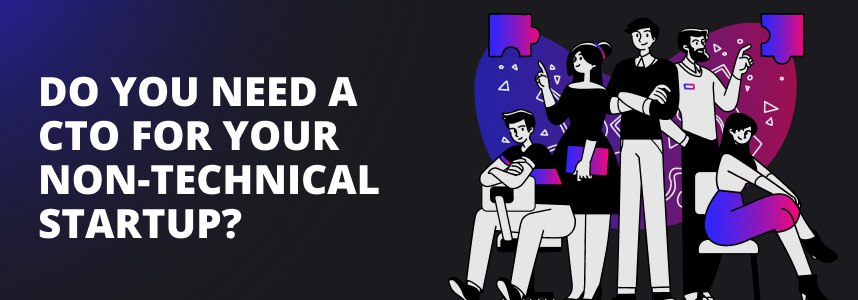Let’s work together to build something amazing. Share your project details and our team will reply to figure out the next steps to your success.

While the conventional Venture Capital model provides a 12-18 month funding runway to startups, this model only works well for some SaaS companies with a unique business model with recurring subscription revenue that takes time to build. Instead of the “hamster wheel” of continual fundraising, SaaS startups should consider other funding options like crowdfunding and private equity funding. This article discusses the challenges SaaS startups face in securing financing and explores alternative funding models beyond the traditional venture capital (VC) model.

Why the Traditional Runway Model Doesn’t Work for Most SaaS Startups
The traditional venture capital funding model of providing startups with 12-18 months of “runway” capital does not work well for most SaaS companies. SaaS startups have a unique business model with recurring subscription revenue that takes time to build. It can take 6-18 months or more of development before launching an MVP and many months of customer acquisition before generating meaningful revenue.
An 18-month funding runway would require SaaS startups to raise additional capital before they have had time to prove their model—putting them in a weak position for future funding rounds.
Rather than the “hamster wheel” of continual fundraising to extend their runway, SaaS startups should consider alternative funding models better suited to their long-term, scalable nature.
For example, SaaS accounting startup Xero took a different approach, raising only $15M in VC funding over its first ten years. Instead, Xero focused on organic growth through customer acquisition and reinvesting revenue into expanding into new markets. This slow-build approach resulted in a $5B+ valuation upon IPO.
In contrast, other SaaS startups that rely primarily on traditional VC funding often get caught in a cycle of raising new rounds every 12-18 months to avoid running out of cash before finding product-market fit or meaningful traction. This “hamster wheel” approach can lead to loss of control and ownership through dilution and the pressure to scale prematurely.
The VC model favors startups that can achieve hypergrowth and an exit within 3-5 years—but for most SaaS companies, slower organic growth and a longer-term vision is a better path to success. By avoiding reliance on short-term VC funding, SaaS startups have more flexibility to experiment, pivot as needed, achieve sustainability and scale—and ultimately build more value for the company and its investors.
Crowdfunding: How to Raise $1M+ and Build a Community of Brand Evangelists
Crowdfunding platforms like Kickstarter and Indiegogo have emerged as vital funding sources for SaaS startups, enabling some to raise over $1 million in seed funding. For example, Anthropic, an AI safety startup, raised $8.4 million on Kickstarter in 2021. Crowdfunding allows SaaS founders to validate their idea, build a community of early adopters, and gain publicity to drive growth.
SaaS startups must build excitement around a compelling product vision to run a successful crowdfunding campaign. Anthropic tapped into concerns about “superintelligent” AI to rally support for their Constitutional AI. SaaS startups should create visually engaging campaign pages that articulate their vision, product roadmap, and critical milestones. They need to drive traffic to the campaign through social sharing, media coverage, influencer marketing, and advertising.
Backers often receive early access to products as a reward, so startups must be ready to deliver. If startups fail to fulfill promises, it damages credibility and relationships with backers. Startups should limit higher-tier tips, which can be logistically challenging to achieve.
While crowdfunding can quickly raise substantial capital, it may distract management from product development and business scaling. The influx of customer feedback and questions during a campaign can be overwhelming. However, for SaaS startups, the benefits of building a loyal community and gaining exposure outweigh these challenges.
With the right vision and execution, crowdfunding is an effective way for SaaS startups to raise over $1 million in funding, validate their idea, and build a base of brand evangelists to support their growth. Crowdfunding may be better for startups looking to get off the ground quickly than more traditional funding routes like venture capital. With this initial boost, startups can focus on refining their product and reaching key milestones to attract further investment.
Private Equity Funding for SaaS Startups
Private equity firms invest in more mature startups to help fuel rapid growth. For SaaS startups looking to scale quickly, private equity funding can be an ideal source of capital. Private equity firms typically provide more significant, longer-term investments that give startups the resources to expand into new markets, fund acquisitions, and ramp up marketing and sales efforts.
For instance, in 2019, private equity firm Vista Equity Partners invested $300 million in Acquia, a SaaS company offering web content management and digital experience platforms. The investment fueled Acquia’s expansion into Asia and allowed the company to make strategic acquisitions to strengthen its product offering.
Private equity funding does come at a cost, however, as the firms expect a sizable return on their investment. They often take an ownership stake and controlling interest in the companies they invest in. Startups also face pressure to scale quickly to achieve the growth targets promised to investors. However, for SaaS startups looking to gain market share and new customers rapidly, private equity funding can be a powerful tool for growth that provides more patience and flexibility than traditional VC funding.
SaaS startups should demonstrate a proven business model, vigorous growth, and a clear path to continued growth and scale to access private equity funding. Having audited financials, a mature product, and significant market traction will make a startup a more attractive investment for private equity firms.
Startups should also have a bold vision for how the funding will drive transformational growth to capture the interest of private equity investors looking for opportunities promising high returns. While private equity funding may mean giving up some control and ownership, the trade-off can be well worth it for SaaS startups focused on a rapid global scale.
Sovereign Wealth Funds as a Source of Funding for SaaS Startups
Sovereign wealth funds control trillions in assets and provide patient, long-term capital to innovative companies. SaaS startups looking to scale globally should consider sovereign wealth funds as a source of funding for expansion into new markets. These funds invest government money to generate returns for their citizens, so they take a very long-term view.
In 2019, for example, the Qatar Investment Authority invested over $150 million in Dropbox, providing capital to fuel Dropbox’s growth in the Middle East and North Africa. Sovereign wealth funds like Singapore’s Temasek and GIC also actively invest in high-growth technology companies. To appeal to sovereign wealth funds, SaaS startups should demonstrate how investment could accelerate their growth into critical global markets, especially in Asia, the Middle East, and other emerging economies.
However, sovereign wealth fund investments often come with strings attached. They may require board seats, access to customer data, or other concessions that could compromise control and privacy. Startups must weigh these trade-offs carefully based on their priorities for growth, customer trust, and company culture.
Sovereign wealth funds also typically invest in more mature startups, rarely at the seed stage. SaaS startups generally need substantial recurring revenue, a global growth strategy, and a proven business model to be considered for multi-million dollar investments. Partnership with a sovereign wealth fund can be a double-edged sword, providing a startup with a deep-pocketed investor and high expectations for growth that may be difficult to achieve.
For the proper SaaS startup, sovereign wealth funds represent a desirable patient, long-term capital source for global expansion. But founders must go in with their eyes open to the potential downsides, including loss of control, privacy concerns, and pressure to scale at a pace that may not match the startup’s capabilities or vision.
With careful planning and negotiation, partnering with a sovereign wealth fund could propel a SaaS startup into new global markets and position it for an eventual IPO or acquisition. But without caution, such a partnership could also compromise the mission and values that made the startup successful in the first place.
Revenue-Based Financing: A “Founder-Friendly” Alternative to Dilutive Equity Funding
Revenue-based financing is an attractive alternative to traditional equity funding for SaaS startups looking to scale without giving up ownership or control. With this model, investors provide capital in exchange for a percentage of future revenue over a fixed period rather than company shares. For SaaS businesses with predictable subscription revenue, revenue-based financing deals can provide millions in funding to accelerate growth.
This type of financing is considered “founder-friendly” because it is non-dilutive – it does not reduce the founders’ equity stake. Startups can access capital without pressure to sell shares or give up board seats to outside investors. Revenue-based financing also typically comes with fewer restrictions than equity funding regarding how the capital can be used. Founders maintain control over critical business decisions and can deploy the funding as needed to scale the company.
However, revenue-based financing may ultimately cost more than equity funding over the lifetime of the deal. Investors expect a more significant return to offset the risk of not receiving an ownership stake. The fixed period, often 3-5 years, also provides less flexibility than equity. Startups must pay a percentage of revenue over that period, even if business conditions change. Some deals also charge penalties if startups pay off the financing early.
Major SaaS companies like Cloudflare, DigitalOcean, and MongoDB have secured multi-million dollar revenue-based financing rounds. Revenue-based financing can be attractive for startups looking to accelerate growth on their own terms, with limited dilution or loss of control. While not without costs and risks, for the right SaaS businesses with solid fundamentals, this innovative funding model provides a path to scale that keeps founders firmly in the driver’s seat.
The IPO Emerging Growth Company Fast Track: How SaaS Startups Are Going Public Earlier
In 2012, the JOBS Act created the “Emerging Growth Company” (EGC) designation, making it easier for startups to IPO and access public markets. SaaS startups that qualify as EGCs have leveraged this fast track to go public at an earlier stage and lower cost. High-profile SaaS companies like CrowdStrike, Cloudflare, and Datadog completed successful IPOs as EGCs, raising hundreds of millions from public markets.
The EGC path allows SaaS startups to IPO within five years of their first revenue, compared to the typical timeline of 10-15 years for traditional tech IPOs. EGCs also face fewer reporting requirements for up to 5 years post-IPO, including only two years of audited financials instead of 3. These provisions lower the cost and complexity of going public, making an IPO feasible for smaller, high-growth SaaS companies.
For SaaS startups, the benefits of an early IPO are significant. Valuations tend to be higher for public companies, as more investors can access shares. The cash infusion from the IPO can fuel growth into new markets or fund acquisitions. The public stock becomes a currency for mergers and acquisitions, enabling startups to scale.
There are challenges to operating as a public company. Management can divert to quarterly reporting and meet analyst expectations. Share prices can be volatile. For SaaS startups, delivering on growth projections is especially important.
Overall, the EGC program has been a boon for innovative SaaS companies ready to access public markets at an earlier stage. With the right mindset and expectations, an IPO for a high-growth SaaS startup can provide benefits far outweigh the challenges of becoming a public company. For startups seeking to scale at speed, the fast track to an IPO is worth considering as an alternative to late-stage private funding.
Final Thoughts
There are many alternatives startup SaaS companies can take to raise funds without giving up too much equity or control of their company. From Crowdfunding, private equity, sovereign wealth funds, and revenue-based financing, startups can choose these alternatives or a mix to grow and scale their organization.
Get the latest news and updates from Aleph One in your inbox.



